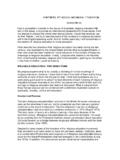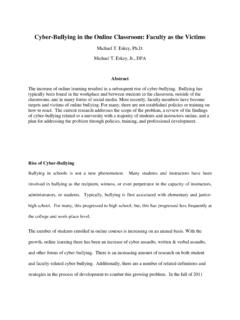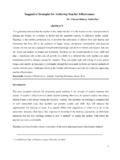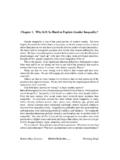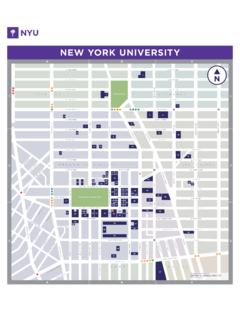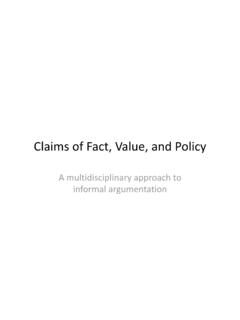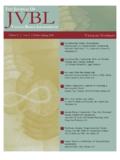Transcription of Culture in Action: Symbols and Strategies
1 Culture IN action : Symbols AND Strategies * ANN SWIDLER Stanford University Culture influences action not by providing the ultimate values toward which action is oriented, but by shaping a repertoire or "tool kit" of habits, skills, and styles from which people construct " Strategies of action ." Two models of cultural influence are developed, for settled and unsettled cultural periods. In settled periods, Culture inde- pendently influences action , but only by providing resources from which people can construct diverse lines of action . In unsettled cultural periods, explicit ideologies directly govern action , but structural opportunities for action determine which among competing ideologies survive in the long run. This alternative view of Culture offers new opportunities for systematic, differentiated arguments about Culture 's causal role in shaping action . The reigning model used to understand cul- ture's effects on action is fundamentally mis- leading.
2 It assumes that Culture shapes action by supplying ultimate ends or values toward which action is directed, thus making values the central causal element of Culture . This paper analyzes the conceptual difficulties into which this traditional view of Culture leads and offers an alternative model. Among sociologists and anthropologists, de- bate has raged for several academic genera- tions over defining the term " Culture ." Since the seminal work of Clifford Geertz (1973a), the older definition of Culture as the entire way of life of a people, including their technology and material artifacts, or that (associated with the name of Ward Goodenough) as everything one would need to know to become a func- tioning member of a society, have been dis- placed in favor of defining Culture as the pub- licly available symbolic forms through which people experience and express meaning (see Keesing, 1974).
3 For purposes of this paper, Culture consists of such symbolic vehicles of meaning, including beliefs, ritual practices, art forms, and ceremonies, as well as informal cultural practices such as language, gossip, stories, and rituals of daily life. These symbolic forms are the means through which "social processes of sharing modes of behavior and outlook within [a] community" (Hannerz, 1969:184) take place. The recent resurgence of cultural studies has skirted the causal issues of greatest interest to sociologists. Interpretive approaches drawn from anthropology (Clifford Geertz, Victor Turner, Mary Douglas, and Claude Levi- Strauss) and literary criticism (Kenneth Burke, Roland Barthes) allow us better to describe the features of cultural products and experiences. Pierre Bourdieu and Michel Foucault have of- fered new ways of thinking about Culture 's re- lationship to social stratification and power.
4 For those interested in cultural explanation (as opposed to "thick description" [Geertz, 1973a] or interpretive social science [Rabinow and Sullivan, 1979]), however, values remain the major link between Culture and action . This is not because sociologists really believe in the values paradigm. Indeed, it has been thor- oughly criticized.' But without an alternative formulation of Culture 's causal significance, scholars either avoid causal questions or admit the values paradigm through the back door. The alternative analysis of Culture proposed here consists of three steps. First, it offers an image of Culture as a "tool kit" of Symbols , stories, rituals, and world-views, which people may use in varying configurations to solve dif- ferent kinds of problems. Second, to analyze Culture 's causal effects, it focuses on "strate- gies of action ," persistent ways of ordering action through time.
5 Third, it sees Culture 's causal significance not in defining ends of ac- tion, but in providing cultural components that are used to construct Strategies of action . * Address all correspondence to: Ann Swidler, Department of Sociology, Stanford University, Stanford, CA 94305. A much earlier version of this paper was presented at the Annual Meetings of the American Sociological Association, September 1982. For helpful comments (including dissents) on earlier drafts and thoughtful discussion of the issues raised here, I would like to thank Robert Bellah, Bennett Berger, Robert Bell, Ross Boylan, Jane Collier, Paul DiMaggio, Frank Dobbin, James Fernandez, Claude Fischer, Elihu M. Gerson, Wendy Griswold, Ron Jepperson, Susan Krieger, Tormod Lunde, John Meyer, John Padgett, Richard A. Peterson, Jonathan Rieder, Theda Skoc- pol, Peter Stromberg, Steven Tipton, R. Stephen Warner, Morris Zelditch, Jr.
6 , and two anonymous reviewers. I See Blake and Davis (1964) and the empirical and theoretical critique in Cancian (1975). American Sociological Review, 1986, Vol. 51 (April:273-286) 273 274 AMERICAN SOCIOLOGICAL REVIEW The paper proceeds, first, by outlining the failures of cultural explanation based on values. It then argues for the superior intuitive plausibility and explanatory adequacy of the alternative model. Finally, it suggests research approaches based on seeing Culture in this new way. Culture AS VALUES Our underlying view of Culture derives from Max Weber. For Weber, human beings are motivated by ideal and material interests. Ideal interests, such as the desire to be saved from the torments of hell, are also ends-oriented, except that these ends are derived from sym- bolic In Weber's (1946a [1922- 3]:280) famous "switchmen" metaphor: Not ideas, but material and ideal interests, directly govern men's conduct.
7 Yet very fre- quently the "world images" that have been created by "ideas" have, like switchmen, determined the tracks along which action has been pushed by the dynamic of interest. Interests are the engine of action , pushing it along, but ideas define the destinations human beings seek to reach (inner-worldly versus other-worldly possibilities of salvation, for example) and the means for getting there (mystical versus ascetic techniques of salva- tion). Talcott Parsons adopted Weber's model, but blunted its explanatory thrust. To justify a dis- tinctive role for sociology in face of the economist's model of rational, interest- maximizing actors, Parsons argued that within a means-ends schema only sociology could account for the ends actors For Weber's interest in the historical role of ideas, Parsons substituted global, ahistorical values. Unlike ideas, which in Weber's sociology are complex historical constructions shaped by in- stitutional interests, political vicissitudes, and pragmatic motives, Parsonian values are ab- stract, general, and immanent in social sys- tems.
8 Social systems exist to realize their core values, and values explain why different actors make different choices even in similar situa- tions. Indeed, Parsons does not treat values as concrete symbolic elements (like doctrines, rituals, or myths) which have histories and can actually be studied. Rather, values are es- sences around which societies are constituted. They are the unmoved mover in the theory of action . Parsons' "voluntaristic theory of action " de- scribes an actor who makes choices in a situa- tion, choices limited by objective conditions and governed by normative regulation of the means and ends of action (Warner, 1978:121). A "cultural tradition," according to Parsons (1951:11-12), provides " value orientations," a " value " defined as "an element of a shared symbolic system which serves as a criterion or standard for selection among the alternatives of orientation which are intrinsically open in a situation.
9 " Culture thus affects human action through values that direct it to some ends rather than others. The theory of values survives in part, no doubt, because of the intuitive plausibility in our own Culture of the assumption that all ac- tion is ultimately governed by some means- ends schema. Culture shapes action by defin- ing what people want. What people want, however, is of little help in explaining their action . To understand both the pervasiveness and the inadequacy of cul- tural values as explanations, let us examine one recent debate in which " Culture " has been invoked as a major causal variable: the debate over the existence and influence of a " Culture of poverty."4 2 In The Sociology of Religion (1963[1922]:1), Weber insists that "[t]he most elementary forms of behavior motivated by religious or magical factors are oriented toward this world." Religious behavior remains ends-oriented, except that both the means and the ends increasingly become purely symbolic (pp.)
10 6-7): Since it is assumed that behind real things and events there is something else, distinctive and spiritual, of which real events are only the symp- toms or indeed the Symbols , an effort must be made to influence, not the concrete things, but the spiritual powers that express themselves through concrete things. This is done through actions that address themselves to a spirit or soul, hence done by instrumentalities that "mean" something, , Symbols . 3 See the summary chapter of The Structure of Social action (Parsons, 1937:697-726), where Par- sons explicitly poses the theory of action as a cor- rection to utilitarian views of action . 4I make no attempt to evaluate the empiricial merits of the Culture -of-poverty argument. Insofar as the argument is waged on both sides as one about who is to blame for poverty, it is sociologically wrong-headed, since both sides seem to agree that structural circumstances are ultimately at fault.
